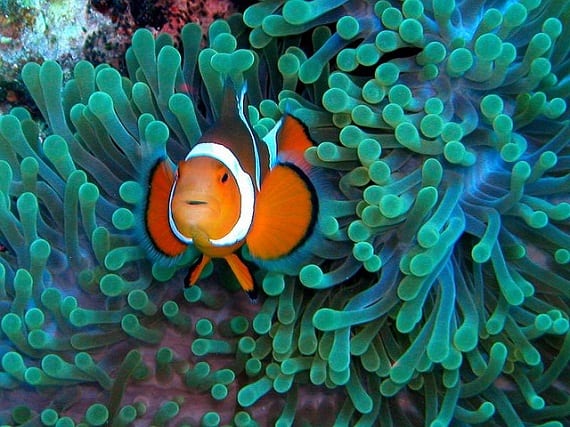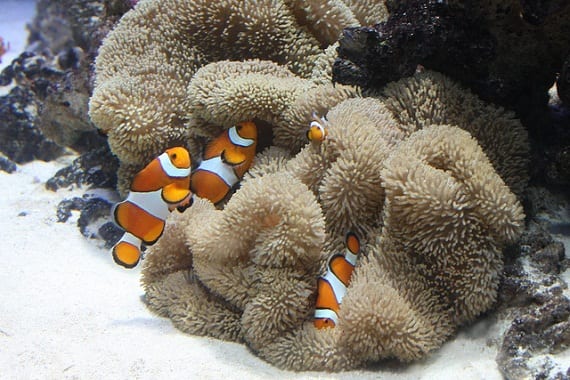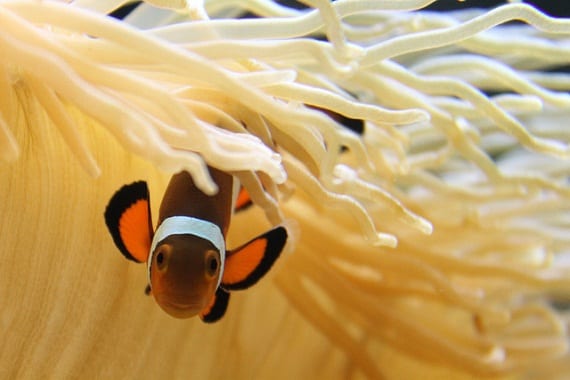December 4, 2013
Creature Feature: Clownfish
BY: Justine Hausheer
The brightly-colored clownfish needs no introduction—the reef fish is one of the most recognizable fish in the world. But aside from being the star of Disney’s “Finding Nemo,” the clownfish has some impressive adaptations and a strange life history.
There are actually 30 species in the clownfish family, but two are the orange-striped fish everyone knows from the big screen. The orange clownfish (Amphiprion percula) and the ocellaris clownfish, or false clownfish, (Amphiprion ocellaris) look nearly identical, but they’re actually two different species. If you get close enough, you can tell them apart by counting the number of dorsal spines on their backs—the orange clownfish has 10 and the ocellaris clownfish has 11.

(Photo: Nemo’s great uncle)
The orange clownfish is found on coral reefs in the western Pacific ocean, while the ocellaris clownfish is found on reefs in the Indo-Pacific. Both clownfish species are associated with two types of sea anemone, the magnificent sea anemone and the gigantic sea anemone. The ocellaris clownfish also likes a third type, the Merten’s carpet anemone. These fish have a mutualistic relationship with the anemones, meaning that both species benefit from the partnership.
Clownfish help feed the anemone, drawing other fish close enough to the anemone’s venomous tentacles to be stung. The fish also increase oxygenation and remove waste material from the anemone. In turn, the anemone protects the fish from predators like brittle stars, wrasses, and other damselfish. Clownfish aren’t affected by the anemone’s dangerous sting because they secrete a special, protective mucus that shields them from the venom.

(Photo: Nikita)
Clownfish also have an unusual way of reproducing—they are all born male, and then many of them actually change sexes. Both the orange and ocellaris clownfish live in groups of two to six fish around their anemone home. Each group has a breeding female, the largest fish, and a breeding male, the next-largest fish. The rest of the group is made up of smaller, non-breeding males. If the female clownfish dies, the breeding male transforms into a female, and the next-largest fish takes over as the breeding male. The cycle continues as females die and new clownfish join the group.

(Photo: vivacevy)
Clownfish depend on their coral reef habitats, which are threatened by ocean acidification and climate change. You can help Oceana protect them by adopting a clownfish for a friend or family-member this holiday season. Visit the Oceana adoption store to learn more, and check back for more Creatures Features on The Beacon.
MOST RECENT
September 3, 2025
Air Raid Panic to Informed Skies and Seas: The National Weather Service in a Nutshell
August 29, 2025
August 22, 2025
Corals, Community, and Celebration: Oceana Goes to Salmonfest!



